Avantika Singh
IHashNet: Iris Hashing Network based on efficient multi-index hashing
Dec 07, 2020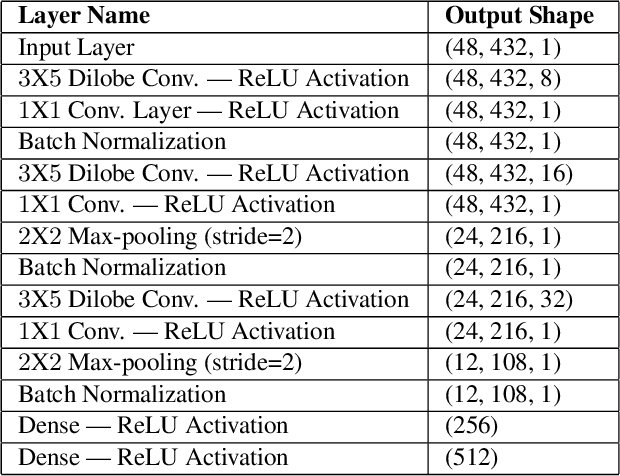
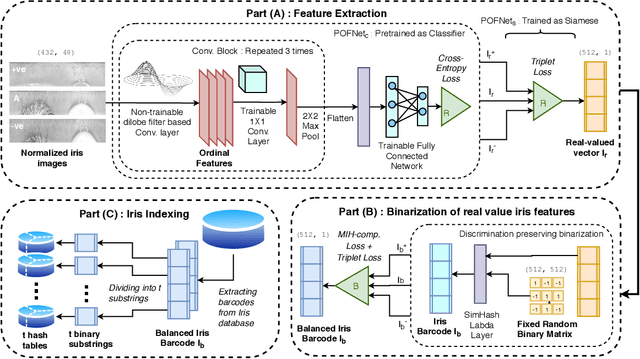
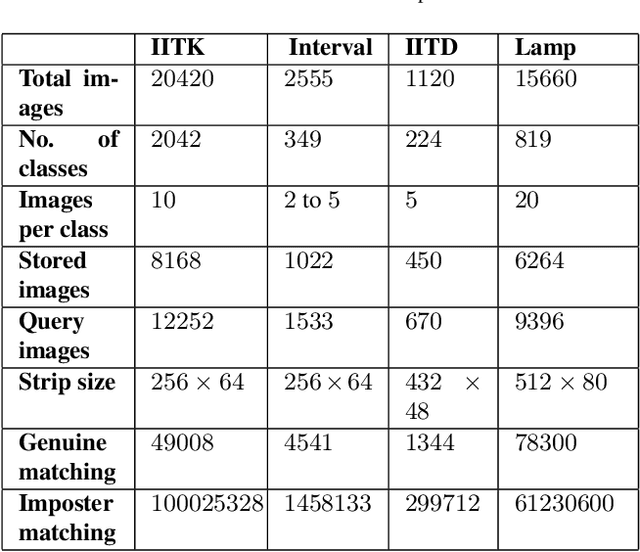
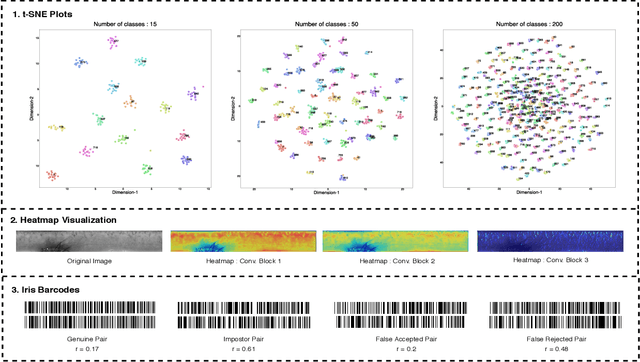
Abstract:Massive biometric deployments are pervasive in today's world. But despite the high accuracy of biometric systems, their computational efficiency degrades drastically with an increase in the database size. Thus, it is essential to index them. An ideal indexing scheme needs to generate codes that preserve the intra-subject similarity as well as inter-subject dissimilarity. Here, in this paper, we propose an iris indexing scheme using real-valued deep iris features binarized to iris bar codes (IBC) compatible with the indexing structure. Firstly, for extracting robust iris features, we have designed a network utilizing the domain knowledge of ordinal filtering and learning their nonlinear combinations. Later these real-valued features are binarized. Finally, for indexing the iris dataset, we have proposed a loss that can transform the binary feature into an improved feature compatible with the Multi-Index Hashing scheme. This loss function ensures the hamming distance equally distributed among all the contiguous disjoint sub-strings. To the best of our knowledge, this is the first work in the iris indexing domain that presents an end-to-end iris indexing structure. Experimental results on four datasets are presented to depict the efficacy of the proposed approach.
FDSNet: Finger dorsal image spoof detection network using light field camera
Dec 18, 2018

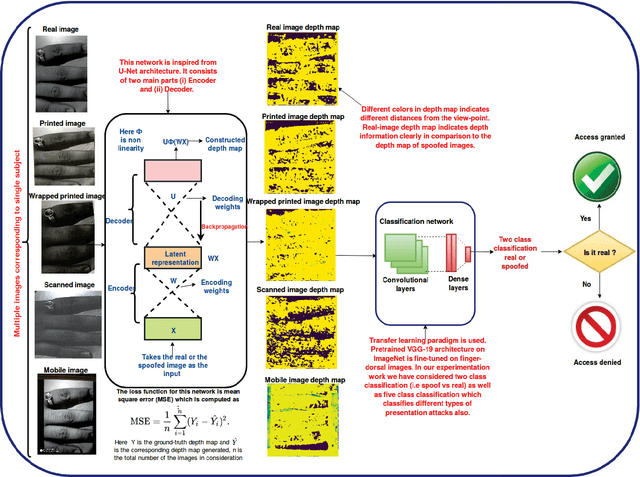
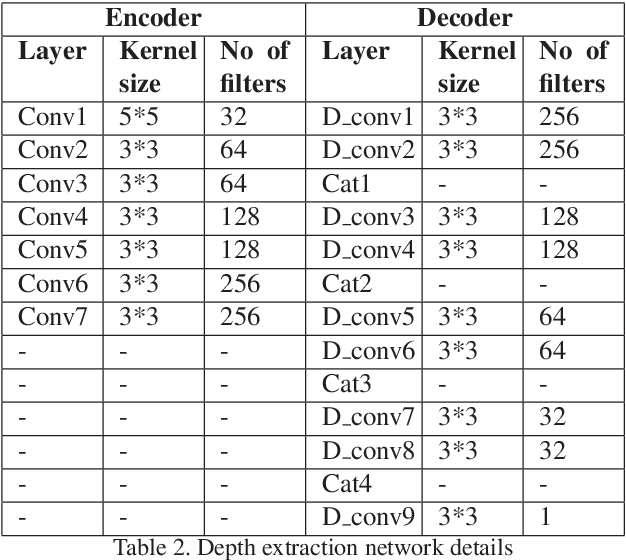
Abstract:At present spoofing attacks via which biometric system is potentially vulnerable against a fake biometric characteristic, introduces a great challenge to recognition performance. Despite the availability of a broad range of presentation attack detection (PAD) or liveness detection algorithms, fingerprint sensors are vulnerable to spoofing via fake fingers. In such situations, finger dorsal images can be thought of as an alternative which can be captured without much user cooperation and are more appropriate for outdoor security applications. In this paper, we present a first feasibility study of spoofing attack scenarios on finger dorsal authentication system, which include four types of presentation attacks such as printed paper, wrapped printed paper, scan and mobile. This study also presents a CNN based spoofing attack detection method which employ state-of-the-art deep learning techniques along with transfer learning mechanism. We have collected 196 finger dorsal real images from 33 subjects, captured with a Lytro camera and also created a set of 784 finger dorsal spoofing images. Extensive experimental results have been performed that demonstrates the superiority of the proposed approach for various spoofing attacks.
FDFNet : A Secure Cancelable Deep Finger Dorsal Template Generation Network Secured via. Bio-Hashing
Dec 13, 2018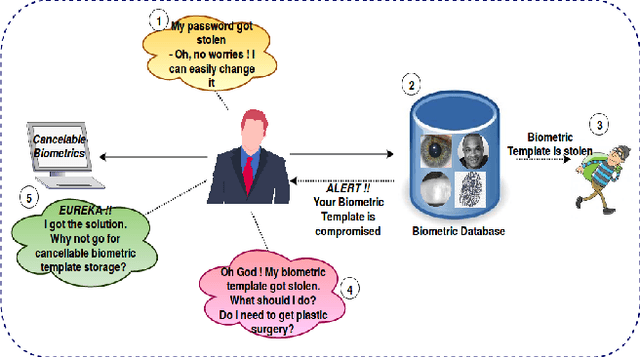

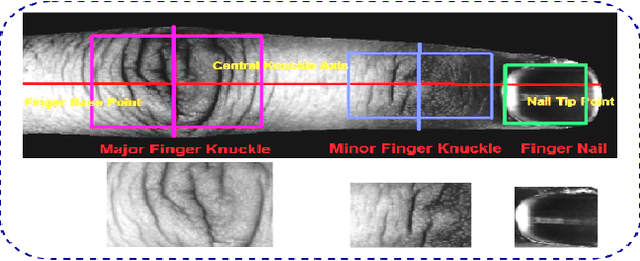
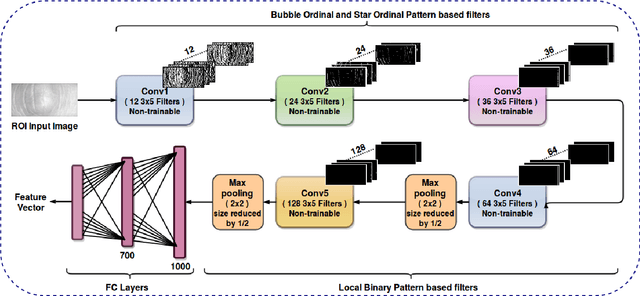
Abstract:Present world has already been consistently exploring the fine edges of online and digital world by imposing multiple challenging problems/scenarios. Similar to physical world, personal identity management is very crucial in-order to provide any secure online system. Last decade has seen a lot of work in this area using biometrics such as face, fingerprint, iris etc. Still there exist several vulnerabilities and one should have to address the problem of compromised biometrics much more seriously, since they cannot be modified easily once compromised. In this work, we have proposed a secure cancelable finger dorsal template generation network (learning domain specific features) secured via. Bio-Hashing. Proposed system effectively protects the original finger dorsal images by withdrawing compromised template and reassigning the new one. A novel Finger-Dorsal Feature Extraction Net (FDFNet) has been proposed for extracting the discriminative features. This network is exclusively trained on trait specific features without using any kind of pre-trained architecture. Later Bio-Hashing, a technique based on assigning a tokenized random number to each user, has been used to hash the features extracted from FDFNet. To test the performance of the proposed architecture, we have tested it over two benchmark public finger knuckle datasets: PolyU FKP and PolyU Contactless FKI. The experimental results shows the effectiveness of the proposed system in terms of security and accuracy.
GHCLNet: A Generalized Hierarchically tuned Contact Lens detection Network
Oct 14, 2017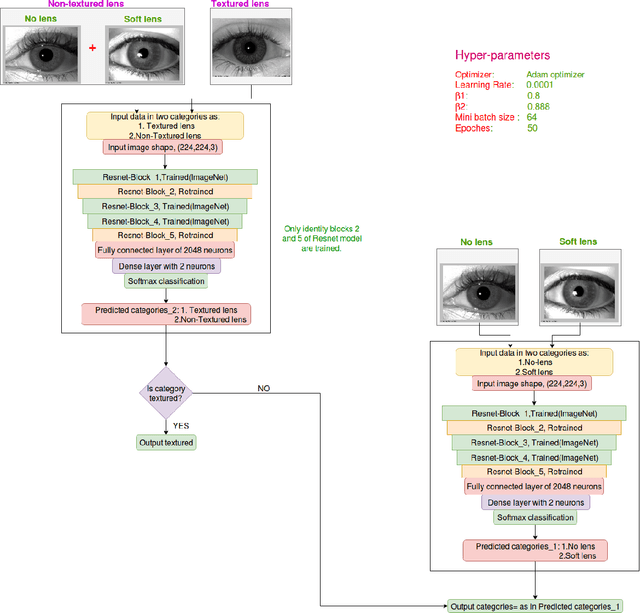
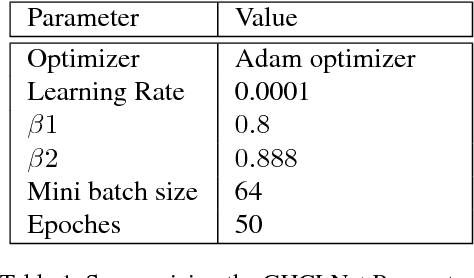
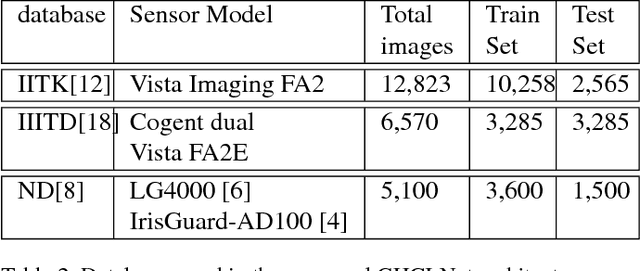
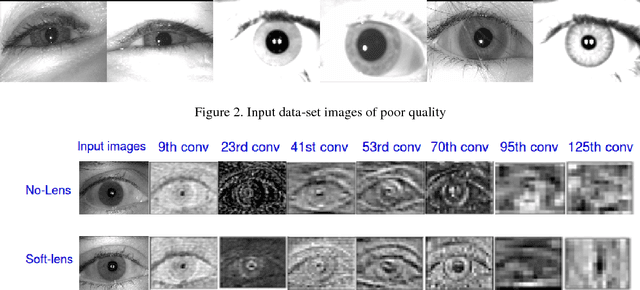
Abstract:Iris serves as one of the best biometric modality owing to its complex, unique and stable structure. However, it can still be spoofed using fabricated eyeballs and contact lens. Accurate identification of contact lens is must for reliable performance of any biometric authentication system based on this modality. In this paper, we present a novel approach for detecting contact lens using a Generalized Hierarchically tuned Contact Lens detection Network (GHCLNet) . We have proposed hierarchical architecture for three class oculus classification namely: no lens, soft lens and cosmetic lens. Our network architecture is inspired by ResNet-50 model. This network works on raw input iris images without any pre-processing and segmentation requirement and this is one of its prodigious strength. We have performed extensive experimentation on two publicly available data-sets namely: 1)IIIT-D 2)ND and on IIT-K data-set (not publicly available) to ensure the generalizability of our network. The proposed architecture results are quite promising and outperforms the available state-of-the-art lens detection algorithms.
 Add to Chrome
Add to Chrome Add to Firefox
Add to Firefox Add to Edge
Add to Edge